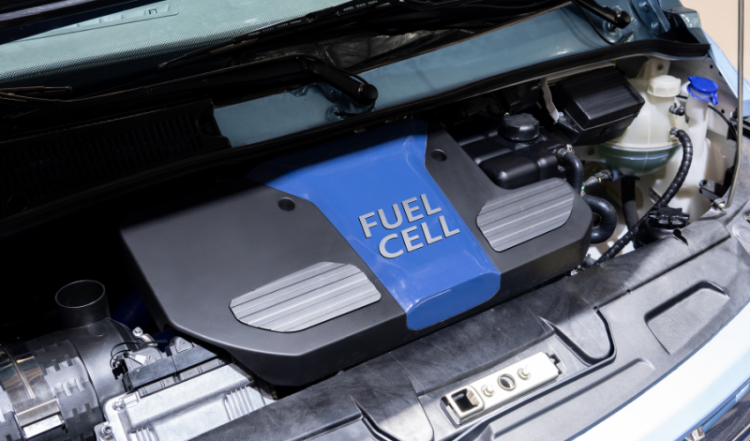How to Choose the Right Powertrain for Your Fleet - Part I
Explore the pros and cons of Internal Combustion Engine (ICE), Electric (EV), Hybrid, and Fuel Cell Electric Vehicles (FCEVs) for fleet management. Learn how each powertrain impacts CO₂ emissions, fuel efficiency, and operational costs in real-world scenarios.
Choosing the right powertrain can be a complex challenge that requires careful consideration. With options like internal combustion engines (ICEs), electric vehicles (EVs), hybrids, and fuel cell electric vehicles (FCEVs) available on the market, fleet managers must consider factors such as fuel efficiency, CO₂ emissions, and operation costs to determine the best fit.
Which powertrain option—ICE, EV, Hybrid, or FCEV—is most suitable for your fleet?
Internal Combustion Engine (ICE) Vehicles

As a traditional choice, ICE vehicles remain popular in fleets due to their high energy density and widespread diesel and petrol refueling infrastructure. Although initially cost-effective, their higher fuel consumption and emissions may challenge long-term sustainability goals.
Usage scenario: Ideal for long-distance routes in areas with limited charging infrastructure.
Electric vehicles (EVs)

EVs produce zero exhaust emissions, which makes them ideal for urban routes with frequent stops, where regenerative braking increases efficiency. Moreover, according to the European Environment Agency, EVs can significantly reduce emissions by using renewable energies. However, the total cost of ownership (TCO) and environmental benefits depend on charging practices and local energy sources.
Usage scenario: Best suited to metropolitan and short-distance routes where charging stations are readily available.
Hybrid vehicles

Hybrids combine ICE engines with electric motors, providing greater fuel economy and lower CO₂ emissions in urban traffic. Although they are not zero-emission, hybrids can work as an intermediate solution for fleets that need flexibility between urban and interurban operations.
Usage scenario: Suitable for journeys that combine urban driving with occasional highway travel.
Fuel Cell Electric Vehicles (FCEVs)

Still emerging in the fleet market, FCEVs run on hydrogen and offer fast refueling, extended range, and zero emissions. However, despite their potential, challenges such as limited infrastructure and higher fuel costs currently limit their widespread adoption.
Usage scenario: Ideal for high-mileage routes where hydrogen refueling stations are available.
What is the effect of each powertrain type on CO2 emissions?
According to research by the International Council on Clean Transportation (ICCT), EVs can reduce CO₂ emissions by up to 70% compared to ICE vehicles, depending on the energy grid's cleanliness. As for hybrid vehicles, while not entirely emission-free, they can lower emissions by 20-30% on urban routes, and fuel cell vehicles are particularly promising for high-mileage operations in regions with hydrogen refueling infrastructure.
Powertrains significantly impact fleet costs and environmental performance. From the reliability of internal combustion engines (ICEs) to the environmental benefits of EVs, each type plays a crucial role. In Part II, we'll take a closer look at costs, efficiency, and strategies to help you make well-informed decisions that align with both operational and sustainability goals for your fleet.
If you're ready to take your fleet's performance to the next level, get in touch with Frotcom today to find the best solution for your business.
- Frotcom
- Powertrain
- Duurzaamheid van de vloot
- Fleet management
- Internal Combustion Engine (ICE)
- Hybrid Vehicles
- Fuel Cell Electric Vehicles (FCEVs)
- Brandstofverbruik
- Sustainable fleets
- Hydrogen-powered Vehicles
- Vloot optimalisatie
- Energy efficiency
- Transport efficiëntie
- CO₂ emissions

